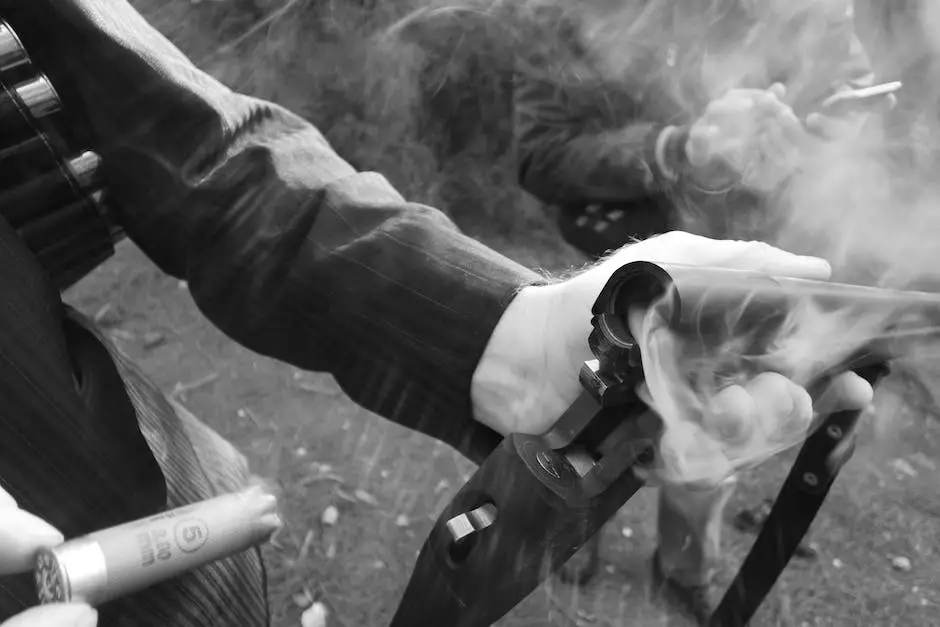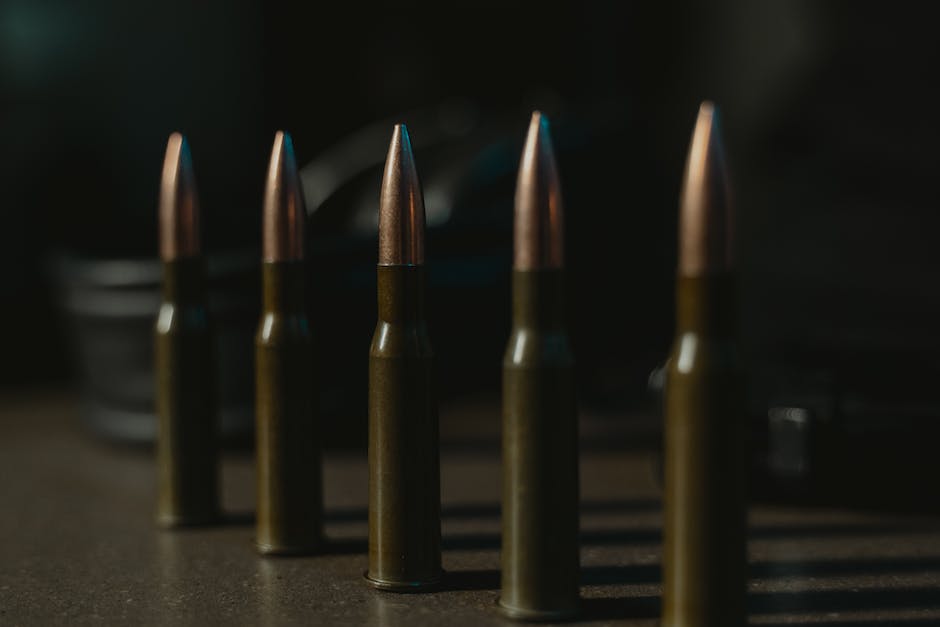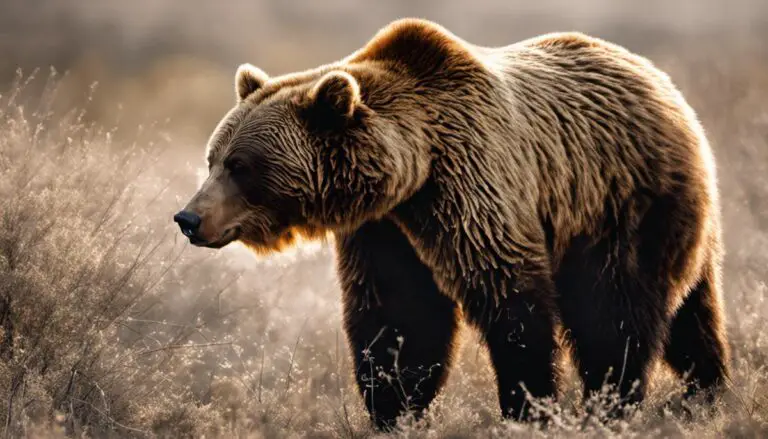In the sprawling expanses of wilderness, encountering a bear can be a majestic but potentially terrifying experience. Armoring one’s self with knowledge and understanding, particularly of the animal’s anatomy and vulnerabilities, often turns into a crucial aspect in such instances. This discourse elucidates the integral facets of a bear’s physique alongside discussing the defensive potential of a common handheld firearm – the 9mm gun. It steps further to shed light on the bear’s susceptibility to such firepower and unravels the influential factors that critically determine the outcome of such a confrontation. For the sake of a wholesome view, it will also present a bird’s eye view of alternative measures one can employ in self-defense during such encounters.
Bear Anatomy and vulnerabilities
The Anatomy of the Bear: Its Susceptibility to a 9mm Firearm
Enthusiasts in diverse fields, from wildlife enthusiasts to firearm connoisseurs, often strive for a nuanced understanding of their passions. Understanding the relationship between the prodigious anatomy of a bear and the impact of a 9mm firearm offers a window into both biology and ballistics.
First and foremost, understanding a bear’s anatomy is critical. Bears belong to the family Ursidae and possess a formidable physical disposition. They boast a robust build with a strong bone structure and an ample range of muscle mass. Combined with a layer of fat which can fluctuate, they forge one of the most fascinating anatomical compositions in the animal kingdom.
Bear skeletons are truly built for strength. They possess a long sturdy backbone, providing optimal support for their dense muscular structure. The ribs, robust and ample, house vital organs, offering natural protection. Moreover, the thick cranium of a bear is also noteworthy to discuss, providing significant protection to their brains, making headshots potentially less effective than perceived.
The muscular structure of a bear is another fundamental factor in its resilience. Bears display a wealth of muscles – all perfectly coordinated for strength, power, and impressive endurance. The thickness and layering of muscles not only contribute to speed and agility but also fortify the defense against any potential external harm, including attacks from a 9mm firearm.
Finally, the fat content in a bear plays a significant role. It acts as a natural shock absorber and can differ dramatically depending upon the bear’s active cycle. During hibernation, a bear can carry an impressive amount of fat, adding to the complexity of penetration from any bullet, including a 9mm.
Now, in terms of a 9mm firearm, it’s worth noting the balance of velocity and mass expressed in its ammunition. While 9mm rounds can cause substantial damage to targets, their efficacy is limited by the bear’s robust anatomy. While penetrating shots with a 9mm weapon can wound a bear, the potential to neutralize the animal in one fell swoop is significantly reduced due to the thick bone structure, muscular layers, and fatty content.
Therefore, even in situations wherein a 9mm firearm is used as a defense mechanism against bears, extreme caution should be emphasized. The bear’s robust anatomy mitigates the weapon’s impact and, instead of deterring a bear, might only provoke it further. It is our respect for these magnificent creatures and understanding their anatomy that guides our interactions and decisions on using firearms responsibly in the wild.

Firepower of a 9mm
Diving into the nitty-gritty of 9mm ammunition damage, we must bear in mind the vast distinction between the conventional targets for these firearms and bears. The caliber isn’t typically meant for such large animals, leading to an inherent mismatch between the average bear size and the bullet’s physical properties. Nevertheless, let’s unpack the potential damage that a 9mm bullet can inflict.
Rotation on Impact: A noteworthy feature of the 9mm bullet is its penchant to rotate upon impact. This property can lead to significant damage in softer targets, causing not just penetration, but large wound channels. Such an effect could possibly stifle the bear’s movement due to the extreme discomfort. However, the threshold of effectiveness dramatically dwindles due to the bear’s muscular structure and hardy constitution that can quickly adapt and recover.
Bullet Depth: The penetration potential of a 9mm is more than sufficient for relatively thinner-skinned beings, often reaching vital organs with ease. However, it becomes an uphill battle with the bear. Their thick layers of fat, muscle, and dense skeleton significantly reduce the bullet’s depth penetration. There’s a probability of not reaching vital organs necessary to incapacitate the bear, meaning the 9mm might only graze the surface of where a lethal hit needs to land.
Energy Transfer: Upon collision, a bullet imparts its kinetic energy to the target. For softer beings, this can generate severe knockdown blows, piercing vital organs, and leading to rapid incapacitation. However, again, the bear’s large mass absorbs this kinetic bombardment far better than humans or smaller animals. Thus, the stopping power of the 9mm bullet is drastically diluted, not providing an adequate bear-stopping force.
Localized Damage: Upon impact, the 9mm bullet tends to create a pinpoint damage path, given that it doesn’t rotate or fragment inside the target. With a bear’s anatomy being vast and expansive, it requires significant luck or precision to hit a lethal spot. Many vital organs or bones may remain unleveled due to the 9mm’s concentrated damage path.
Our verdict? The 9mm bullet, while effective on many fronts, lacks the required punch to take down a large, vigorous animal like a bear consistently. Besides the bullet’s limitations, factors like adrenaline, the bear’s physical constitution, and even the shooter’s precision, play a critical part in the equation. The need for extreme caution in these encounters remains paramount. Though bear confrontations are rare, it serves to await professional help rather than challenge their immense power and resilience based on the assumption of a 9mm firearm’s potency.

Factors Influencing the Potential Kill
Bear encounters, while exhilarating and awe-inspiring, can also present enormous danger, especially when armed with a weapon as simple yet powerful as a 9mm firearm. It’s crucial for hobbyists, outdoorsmen, and enthusiasts alike to understand the intricacies and potential limitations of this ammunition against such a formidable opponent.
The standard 9mm bullet isn’t designed with bears in mind; rather, it’s structured to incapacitate smaller and less robust foes. An interesting aspect to consider is the bullet’s rotation upon impact. When a bullet leaves the barrel, it begins spinning due to the barrel rifling. This causes it to behave differently when it lands on the target. The rotation, coupled with the bear’s muscular build, often results in the bullet swerving or deflecting upon impact, reducing the desired damage.
This lack of effectiveness is deepened when we realize the difficulty of penetrating a bear’s thick layers with a 9mm. A bear’s body is beautifully adapted to provide protection. Their multiple layers from skin, to fat, to muscle, makes their body a natural armor. As such, a seemingly powerful 9mm bullet may end up barely making any substantial penetration, therefore not reaching vital organs.
Energy transfer is another influential factor in our discussion. Much of the stopping power of a bullet lies in how well it transfers its energy to the target. With a large creature like a bear, the energy transfer from a 9mm round may not be sufficient enough to cause considerable damage due to the bear’s large body mass, leading to less impact and a lower chance of incapacitation.
Next, let’s discuss localized damage – the 9mm bullet, due to its size and speed, can cause considerable local damage, but the challenge lies in hitting vital spaces on a bear’s anatomy. Striking non-vital areas will not be enough to substantially harm a bear and may only serve to provoke it further.
Now, what’s the final word on the 9mm bullet’s effectiveness against bears? Simply put: it’s not the ideal choice. The combination of the bear’s robust build, the bullet’s designing, and the physical reactions during and after the shot all contribute to the overall difficulty and high risk in such an endeavor.
In summary, while the 9mm can be convincingly powerful against smaller adversaries, it is far from the best choice in a bear encounter. Outdoorsmen, hunters, and enthusiasts must always exercise extreme caution. When in doubt, seek professional help for bear encounters – the safety of all parties involved, including the majestic bear, should always take precedence.

Alternative Self-defense Options in Bear Encounters
Exploring Alternative Defense Strategies Against Bear Attacks
After closely examining the drawbacks of using a 9mm firearm against bears, it’s crucial to think outside the box for alternative defense strategies. They say ‘knowledge is power,’ and understanding bear behavior is the first and most effective line of defense.
Appreciating a bear’s interactions, behavior, and disposition can be the difference between a tense encounter and a safe retreat. Understanding bears’ behavioral indicators may assist in recognizing when they feel threatened or when they’re more likely to become aggressive. Remember, bears are not naturally aggressive towards humans. They mainly attack in self-defense or when protecting their young.
After reading the signs, maintaining a calm demeanor is the next important step. Running can trigger a bear’s hunting instinct, turning a potentially safe situation into a dangerous one. Instead, back away slowly and try to appear larger by raising the arms or standing on the toes. This might force the bear to reassess the situation and possibly give a window for escape.
In addition, bear deterrent sprays have proven to be highly successful. Packing a punch from a distance, these sprays temporarily impair the bear’s vision and respiratory system, creating a chance for a quick retreat. They are non-lethal to bears, further advocating for coexistence rather than extermination.
Some might see the bear bells, little bells worn on clothing or backpacks to produce noise and prevent startling a bear, as the state-of-the-art bear defense tool. They may not stop a bear in its track, but they can definitely prevent the element of surprise. The sound of bear bells gives bears a head’s up of human presence, perhaps causing them to steer clear.
For the adventurous souls who enjoy spending time in bear country, investing in a bear-resistant food container could be the difference between a peaceful camping trip or a midnight scare. These containers are designed to keep bears from accessing campers’ food, thus reducing the allure of human campsites.
Conclusively, dealing with bear encounters calls for wisdom, not fire-power. To reiterate, it’s significant to respect these mighty creatures’ habitats, understand their behaviors, and use non-lethal deterrence methods to keep both bears and people safe. The world is big enough for all of us to live harmoniously, and it’s essential to remember we are the visitors whenever we venture into bear country!

The wilds are filled with wonder and challenges, bear encounters being one among them. A solid comprehension of bear anatomy and the firepower of a 9mm handgun can certainly improve the odds in a hypothetical faceoff. However, it is important to appreciate that these creatures are not our enemies; understanding their behavior and psychology can help prevent confrontations even before they occur. Defensive measures like bear sprays and deterrent tactics can turn out to be lifesaving tools in keeping both parties safe and unharmed. In the end, remember it is our actions that make all the difference, not only in terms of self-protection but also in co-existing harmoniously with these magnificent creatures of the wild.

Born in rural Texas, Logan has been a passionate gun enthusiast from a young age, influenced by his family’s deep-rooted tradition in hunting and sport shooting. He has carved out a niche as an authoritative voice in the firearms community, writing extensively about gun safety, hunting techniques, and the latest advancements in firearm technology.

